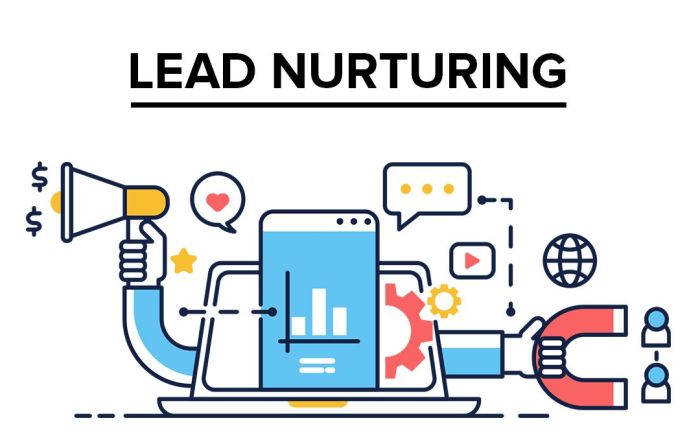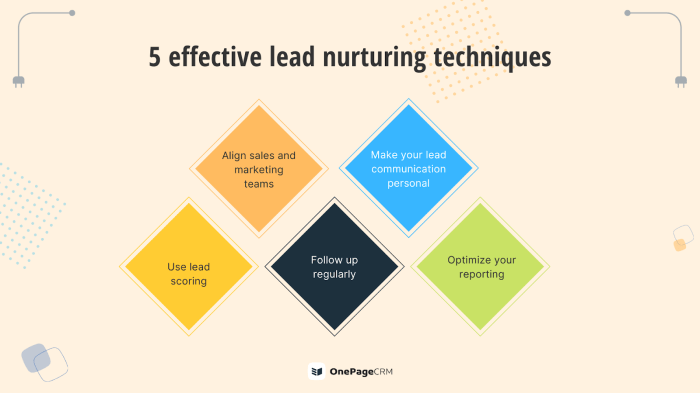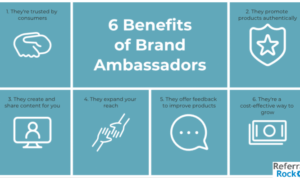Developing a Content Strategy for Lead Nurturing sets the stage for engaging with your audience in a meaningful way, guiding them through the buyer’s journey with tailored content and automation. Get ready to dive into the world of lead nurturing and watch your marketing efforts soar to new heights.
From understanding the importance of lead nurturing to creating targeted content and measuring success, this comprehensive guide will equip you with the tools needed to succeed in today’s competitive market.
Understanding Lead Nurturing

Lead nurturing is a crucial aspect of marketing that involves building relationships with potential customers at each stage of the buyer’s journey. It focuses on providing valuable information and content to prospects to guide them towards making a purchase decision. Unlike lead generation, which focuses on capturing leads, lead nurturing involves engaging and nurturing those leads to ultimately convert them into customers.
Importance of Lead Nurturing
Lead nurturing plays a vital role in marketing as it helps businesses to develop meaningful connections with their audience. By providing relevant and personalized content, companies can establish trust and credibility with potential customers, leading to increased conversion rates and customer loyalty.
- Builds Trust: By consistently providing valuable information, businesses can build trust with leads and establish themselves as industry experts.
- Increases Conversion Rates: Nurtured leads are more likely to make a purchase compared to non-nurtured leads, resulting in higher conversion rates.
- Improves Customer Retention: Effective lead nurturing can help in retaining customers by providing ongoing support and value even after the purchase.
Stages of Lead Nurturing Process
Lead nurturing typically involves several stages to guide leads through the sales funnel and convert them into customers.
- Awareness: In this stage, leads become aware of the business and its offerings through various marketing channels.
- Interest: Leads show interest in the products or services offered and engage with the content provided.
- Evaluation: Leads evaluate the offerings and compare them with competitors to make an informed decision.
- Decision: Leads are ready to make a purchase decision and become customers.
Developing Buyer Personas
Creating detailed buyer personas is crucial for successful lead nurturing. Buyer personas are fictional representations of your ideal customers based on market research and real data about your existing customers. They help in understanding your target audience better, and tailoring your content and messaging to address their specific needs and pain points.
Significance of Buyer Personas
- Help in understanding the goals, challenges, and preferences of your target audience.
- Enable you to create personalized and relevant content that resonates with specific leads.
- Aid in aligning your marketing and sales efforts to better engage and convert leads.
Information to Include in Buyer Personas
- Demographic details such as age, gender, location, job title, income level, etc.
- Psychographic information like interests, values, attitudes, lifestyle, etc.
- Behavioral data including buying patterns, preferred communication channels, online behavior, etc.
Tips for Creating Effective Buyer Personas
- Conduct thorough research through surveys, interviews, and data analysis.
- Involve sales and customer service teams to gather insights and feedback.
- Use tools like Google Analytics, CRM data, and social media analytics for valuable information.
- Ensure personas are detailed, realistic, and based on actual data rather than assumptions.
Creating Targeted Content: Developing A Content Strategy For Lead Nurturing

To effectively nurture leads, it is crucial to create targeted content that resonates with your audience at different stages of the buyer’s journey. By aligning your content with where the prospective buyer is in their decision-making process, you can provide valuable information that guides them towards making a purchase. Let’s explore the types of content suitable for lead nurturing and how to personalize it for maximum impact.
Types of Content for Lead Nurturing
- Blog Posts: Informative articles that address common pain points and provide solutions.
- Email Campaigns: Personalized messages tailored to the recipient’s interests and needs.
- Case Studies: Real-life examples of how your product or service has helped others.
- Webinars: Interactive sessions that educate and engage potential customers.
Importance of Aligning Content with the Buyer’s Journey
It’s essential to match your content with where the buyer is in their journey to ensure relevance and engagement. By understanding their needs and challenges at each stage, you can deliver the right information at the right time, building trust and credibility along the way.
Examples of Personalized Content for Different Funnel Stages
- Awareness Stage: Infographics or educational videos introducing the problem and potential solutions.
- Consideration Stage: Comparison guides or product demos showcasing your offerings.
- Decision Stage: Free trials or consultations to help prospects experience your product firsthand.
Repurposing Existing Content for Lead Nurturing
Maximize the value of your existing content by repurposing it for lead nurturing purposes. You can turn a popular blog post into a series of emails or create an ebook from a collection of related articles. By adapting your content to fit the needs of leads at different stages, you can provide continuous value and keep them engaged throughout their journey.
Utilizing Marketing Automation
Marketing automation plays a crucial role in lead nurturing by streamlining and automating various marketing processes to effectively engage and nurture leads throughout their buyer’s journey. It helps in delivering the right content to the right leads at the right time, increasing the chances of converting them into customers.
Comparison of Marketing Automation Tools
- HubSpot: Known for its user-friendly interface and comprehensive features for lead nurturing, email marketing, and CRM integration.
- Marketo: Offers advanced lead scoring capabilities, email marketing automation, and robust analytics for tracking campaign performance.
- Pardot: Part of Salesforce, Pardot provides seamless integration with Salesforce CRM, personalized email campaigns, and lead scoring functionality.
Automation of Email Campaigns, Lead Scoring, and Drip Marketing, Developing a Content Strategy for Lead Nurturing
- Email Campaigns: Marketing automation tools enable the automation of email campaigns, allowing marketers to send personalized and targeted emails based on lead behavior and preferences.
- Lead Scoring: Automation helps in assigning scores to leads based on their interactions with the brand, allowing sales teams to prioritize high-quality leads for follow-up.
- Drip Marketing: With automation, drip marketing campaigns can be set up to deliver a series of automated messages to leads over time, nurturing them with relevant content and guiding them through the sales funnel.
Best Practices for Integrating Marketing Automation
- Segment Your Audience: Divide leads into different segments based on their demographics, behaviors, and interests to deliver personalized content.
- Create Engaging Content: Develop valuable and relevant content that resonates with your audience and drives them towards conversion.
- Monitor and Analyze: Regularly track and analyze the performance of your automation campaigns to optimize and improve results over time.
Measuring Success and Iterating
In order to ensure the effectiveness of a lead nurturing strategy, it is crucial to measure its success and continuously iterate for improvement.
Key Metrics for Evaluating Effectiveness
- Conversion Rate: Measure how many leads progress through the sales funnel.
- Engagement Rate: Track how leads interact with your content and emails.
- Lead Velocity: Monitor the speed at which leads move through the pipeline.
- ROI: Calculate the return on investment generated from lead nurturing efforts.
Importance of A/B Testing
A/B testing is essential for optimizing lead nurturing campaigns as it allows you to compare different variations of content or strategies to see which performs better. This data-driven approach helps in making informed decisions to enhance the effectiveness of your lead nurturing efforts.
Analyzing Data for Refinement
Utilize analytics tools to analyze data such as open rates, click-through rates, and conversion rates. By examining this data, you can identify trends, preferences, and areas for improvement in your lead nurturing strategy.
Tips for Continuous Iteration
- Regularly review performance metrics to identify what is working and what needs improvement.
- Experiment with different content formats, messaging, and timing to see what resonates best with your leads.
- Seek feedback from the sales team to understand the quality of leads generated through nurturing efforts.
- Stay updated on industry trends and adjust your content strategy accordingly to stay relevant and engaging.





